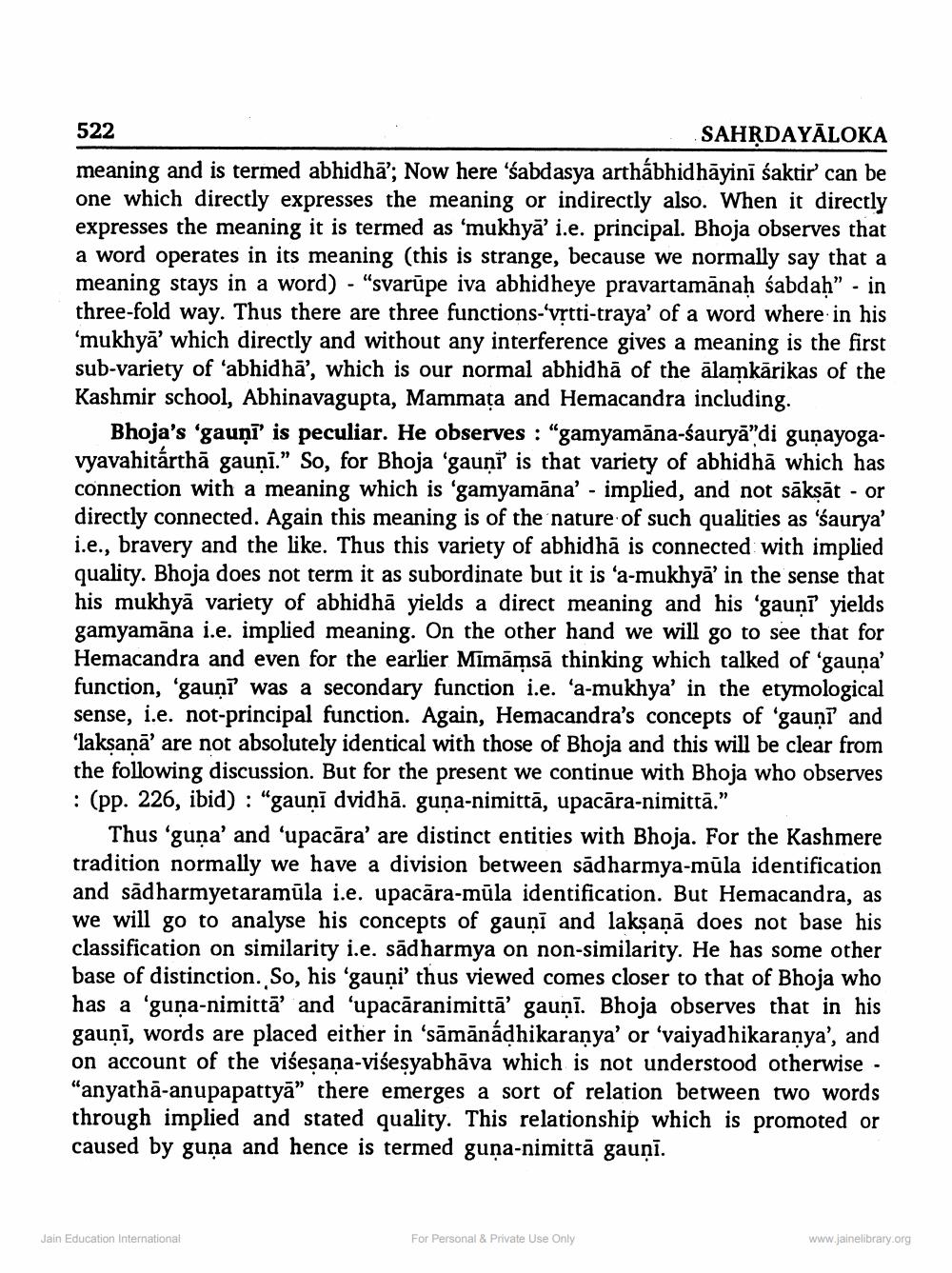________________
522
SAHĶDAYĀLOKA meaning and is termed abhidhā'; Now here 'sabdasya arthábhidhāyini saktir' can be one which directly expresses the meaning or indirectly also. When it directly expresses the meaning it is termed as 'mukhyā' i.e. principal. Bhoja observes that a word operates in its meaning (this is strange, because we normally say that a meaning stays in a word) - "svarūpe iva abhidheye pravartamānah sabdah" - in three-fold way. Thus there are three functions-vrtti-traya' of a word where in his 'mukhyā' which directly and without any interference gives a meaning is sub-variety of abhidhā', which is our normal abhidhā of the alamkārikas of the Kashmir school, Abhinavagupta, Mammata and Hemacandra including.
Bhoja's 'gauni' is peculiar. He observes : "gamyamāna-śaurya"di gunayogavyavahitárthā gaunī.” So, for Bhoja 'gauni' is that variety of abhidhā which has connection with a meaning which is 'gamyamāna' - implied, and not sāksāt - or directly connected. Again this meaning is of the nature of such qualities as 'saurya' i.e., bravery and the like. Thus this variety of abhidhā is connected with implied quality. Bhoja does not term it as subordinate but it is 'a-mukhyā' in the sense that his mukhyā variety of abhidhā yields a direct meaning and his 'gaunī yields gamyamāna i.e. implied meaning. On the other hand we will go to see that for Hemacandra and even for the earlier Mimāmsā thinking which talked of 'gauna' function, 'gauņi was a secondary function i.e. 'a-mukhya' in the etymological sense, i.e. not-principal function. Again, Hemacandra's concepts of 'gauņi and 'laksanā' are not absolutely identical with those of Bhoja and this will be clear from the following discussion. But for the present we continue with Bhoja who observes : (pp. 226, ibid) : "gauņi dvidhā. guna-nimittā, upacāra-nimittā.”
Thus 'guna' and 'upacāra' are distinct entities with Bhoja. For the Kashmere tradition normally we have a division between sādharmya-mūla identification and sādharmyetaramūla i.e. upacāra-mūla identification. But Hemacandra, as we will go to analyse his concepts of gauņi and laksaņā does not base his classification on similarity i.e. sādharmya on non-similarity. He has some other base of distinction. So, his 'gauņi' thus viewed comes closer to that of Bhoja who has a 'guņa-nimittā' and 'upacāranimitta' gauņi. Bhoja observes that in his gauņi, words are placed either in 'sāmānádhikaranya' or 'vaiyadhikaranya', and on account of the viśeșaņa-višesyabhāva which is not understood otherwise - "anyathā-anupapattyā" there emerges a sort of relation between two words through implied and stated quality. This relationship which is promoted or caused by guna and hence is termed guņa-nimittā gauņi.
Jain Education International
For Personal & Private Use Only
www.jainelibrary.org




